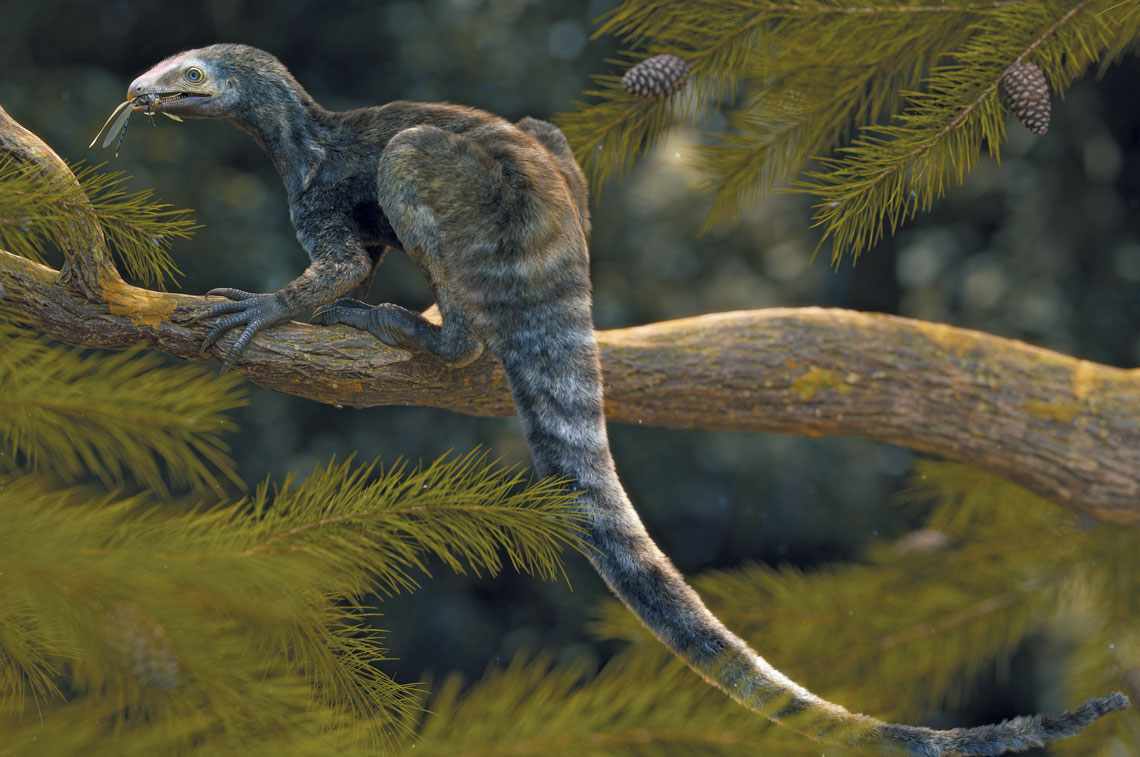
Caio FantiniArtistic depiction of Venetoraptor gassenae, which was probably carnivorous and climbed treesCaio Fantini
A reptile with a curved beak capable of tearing apart pieces of meat, and “hands” with long fingers and sharp, curved claws, ideal for grasping branches. This is Venetoraptor gassenae of the Lagerpetidae family, a species that lived around 230 million years ago, measured approximately 1 meter in length, weighed between 4 and 8 kilograms, and walked on its two hind legs. The description was based on a well-preserved fossil found in the municipality of São João do Polêsine, Rio Grande do Sul: the skull, with the tip of the jaw and the orbit intact, as well as the hand with long fingers, particularly the fourth digit. “This is the elongated finger in pterosaurs that supports the wing,” explains paleontologist Rodrigo Temp Müller of the Federal University of Santa Maria (UFSM). Even more interesting is that the finding challenges the idea that animals of the period were generic and uniform. “With this unusual discovery, we began to realize that this hypothesis was wrong,” says Müller. “Dinosaurs and pterosaurs would have been selected from these very diverse lineages.” (Nature, August 16).
Republish